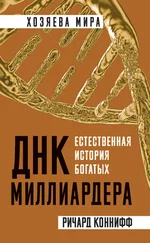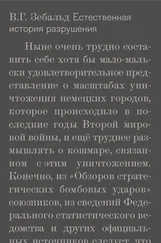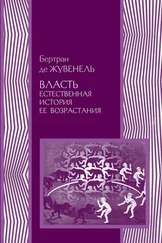К тому же она, как гласит одно из ее рекомендательных писем, очень одаренная скрипачка. Послушать ее игру можно здесь: https://youtu.be/aVXG5koU9G4.
Эта сцена с торжественно вступающей в дом командой энтомологов совсем не нова. Сам Линней, отец современной систематики, давший названия очень многим видам членистоногих, распространенных в наших домах, имел особый оркестр, шествовавший перед ним, когда он отправлялся на экскурсию. До наших дней дошел барабан из состава этого оркестра. См.: B. Jonsell, «Daniel Solander — the Perfect Linnaean; His Years in Sweden and Relations with Linnaeus», Archives of Natural History 11, no. 3 (1984): 443–450.
Энтомологи проводят много времени, разглядывая гениталии насекомых. Эта особенность, в сочетании со специфическими формами, в каких энтомологи выражают свою любовь и признательность к насекомым, порой создает необычные ситуации. Например, мой друг Дэн Симберлофф недавно стал обладателем нового вида вши, паразитирующей на стрижах, названного в его честь. Это очень лестно, но не могу не упомянуть здесь признак, делающий этот новый вид ( Dennyus simberloffi ) уникальным, выделяющим его среди всех его родственников. Эта вошь имеет очень маленькие гениталии и огромные голову и задний проход. См.: D. Clayton, R. Price, and R. Page, «Revision of Dennyus ( Collodennyus ) Lice (Phthiraptera: Menoponidae) from Swiftlets, with Descriptions of New Taxa and a Comparison of Host — Parasite Relationships», Systematic Entomology 21, no. 3 (1996): 179–204.
Если существует загробная жизнь, то энтомологи должны некоторое время после смерти проводить в пробирке, ожидая, пока какое-нибудь очень загруженное работой божество не определит, достойны ли они того, чтобы их накололи на булавку.
A. A. Madden, A. Barberán, M. A. Bertone, H. L. Menninger, R. R. Dunn, and N. Fierer, «The Diversity of Arthropods in Homes across the United States as Determined by Environmental DNA Analyses», Molecular Ecology 25, no. 24 (2016): 6214–6224.
Эти взаимоотношения между тлями и осами впервые наблюдал Левенгук в саду своего дома в Дельфте. См.: F. N. Egerton, «A History of the Ecological Sciences, Part 19: Leeuwenhoek's Microscopic Natural History», Bulletin of the Ecological Society of America 87 (2006): 47–58.
См., к примеру: E. Panagiotakopulu, «New Records for Ancient Pests: Archaeoentomology in Egypt», Journal of Archaeological Science 28, no. 11 (2001): 1235–1246; E. Panagiotakopulu, «Hitchhiking across the North Atlantic — Insect Immigrants, Origins, Introductions and Extinctions», Quaternary International 341 (2014): 59–68; E. Panagiotakopulu, P. C. Buckland, and B. J. Kemp, «Underneath Ranefer's Floors — Urban Environments on the Desert Edge», Journal of Archaeological Science 37, no. 3 (2010): 474–481; E. Panagiotakopulu and P. C. Buckland, «Early Invaders: Farmers, the Granary Weevil and Other Uninvited Guests in the Neolithic», Biological Invasions 20, no. 1 (2018): 219–233.
A. Bain, «A Seventeenth-Century Beetle Fauna from Colonial Boston», Historical Archaeology 32, no. 3 (1998): 38–48.
E. Panagiotakopulu, «Pharaonic Egypt and the Origins of Plague», Journal of Biogeography 31, no. 2 (2004): 269–275.
Подробнее об этом можно прочитать в статье: J. B. Johnson and K. S. Hagen, «A Neuropterous Larva Uses an Allomone to Attack Termites», Nature 289 (5797): 506.
E. A. Hartop, B. V. Brown, R. Henry, and L. Disney, «Opportunity in Our Ignorance: Urban Biodiversity Study Reveals 30 New Species and One New Nearctic Record for Megaselia (Diptera: Phoridae) in Los Angeles (California, USA)», Zootaxa 3941, no. 4 (2015): 451–484.
E. A. Hartop, B. V. Brown, R. Henry, and L. Disney, «Flies from LA, the Sequel: A Further Twelve New Species of Megaselia (Diptera: Phoridae) from the BioSCAN Project in Los Angeles (California, USA)», Biodiversity Data Journal 4 (2016).
J. A. Feinberg, C. E. Newman, G. J. Watkins-Colwell, M. D. Schlesinger, B. Zarate, B. R. Curry, H. B. Shaffer, and J. Burger, «Cryptic Diversity in Metropolis: Confirmation of a New Leopard Frog Species (Anura: Ranidae) from New York City and Surrounding Atlantic Coast Regions», PLoS One 9, no. 10 (2014): e108213; J. Gibbs, «Revision of the Metallic Lasioglossum (Dialictus) of Eastern North America (Hymenoptera: Halictidae: Halictini)», Zootaxa 3073 (2011): 1–216; D. Foddai, L. Bonato, L. A. Pereira, and A. Minelli, «Phylogeny and Systematics of the Arrupinae (Chilopoda Geophilomorpha Mecistocephalidae) with the Description of a New Dwarfed Species», Journal of Natural History 37 (2003): 1247–1267, https://doi.org/10.1080/00222930210121672
Y. Ang, G. Rajaratnam, K. F. Y. Su, and R. Meier, «Hidden in the Urban Parks of New York City: Themira lohmanus, a New Species of Sepsidae Described Based on Morphology, DNA Sequences, Mating Behavior, and Reproductive Isolation (Sepsidae, Diptera)», ZooKeys 698 (2017): 95.
In the book H. W. Greene, Tracks and Shadows: Field Biology as Art (Berkeley: University of California Press, 2013).
См.: Кант И. Критика способности суждения. — М.: Искусство, 1994.
Еще одной особенностью пещерных животных является их способность существовать длительное время без пищи. Один этнограф, изучавший дома зулусов, обнаружил, в них в большом количестве чешуйниц из рода Lepisma (которые очень обычны и в Роли). Из любопытства он посадил одну чешуйницу в винный бокал, и она прожила там целых три месяца без всякой пиши, не считая пыли, оседавшей внутрь бокала. См.: L. Grout, Zulu-Land; or, Life among the Zulu-Kafirs of Natal and Zulu-Land, South Africa (London: Trübner & Co., 1860).
Читать дальше
Конец ознакомительного отрывка
Купить книгу
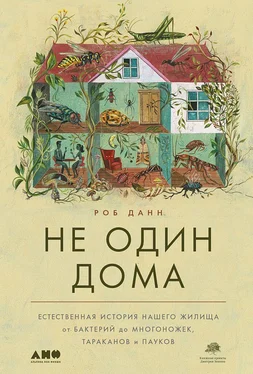
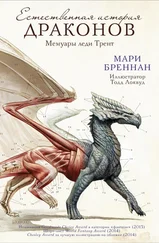
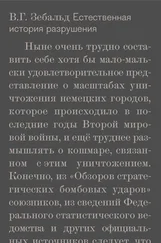



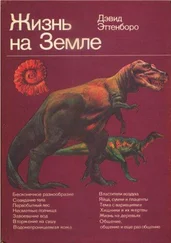

![Мари Бреннан - Естественная история драконов. Мемуары леди Трент. Путешествие на «Василиске» [litres]](/books/420782/mari-brennan-estestvennaya-istoriya-drakonov-memuar-thumb.webp)
![Мари Бреннан - Естественная история драконов. Мемуары леди Трент. Тропик Змеев [litres с оптимизированной обложкой]](/books/429004/mari-brennan-estestvennaya-istoriya-drakonov-memuar-thumb.webp)
